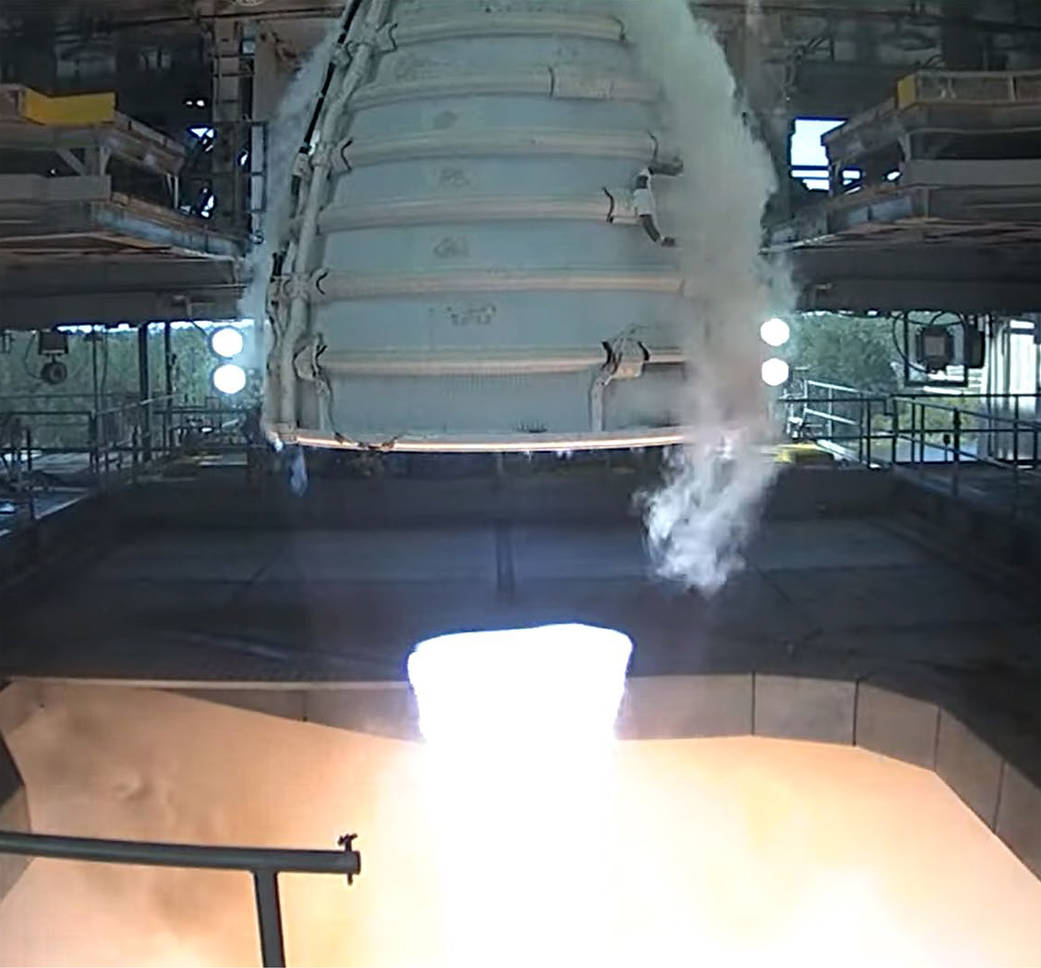Note: The following article is part of a series highlighting propulsion testing at NASA’s Stennis Space Center. To access the entire series, please visit: https://www.nasa.gov/stennis/powering-space-dreams/.
Since the United States sent the first humans to the Moon more than 60 years ago, NASA’s Stennis Space Center near Bay St. Louis, Mississippi, has answered the call to help power the nation’s space dreams.
“History shows NASA Stennis is the country’s premier rocket engine test site and the go-to place for propulsion testing,” NASA Stennis Director John Bailey said. “It started with Apollo and continued through space shuttle. Now, we are going back to the Moon and beyond with Artemis – and it all comes through NASA Stennis.”
As the nation raced to send the first humans to the Moon, NASA selected a remote location in Hancock County, Mississippi, in October 1961 to test the needed rocket stages. Thanks to a massive construction project, the site conducted its first Saturn V rocket stage test in April 1966. In the next four-plus years, NASA Stennis tested 27 Saturn V stages, including those that launched 12 astronauts to walk on the Moon.
“Talking to people working here during those years, you hear how much they believed in the mission,” said Joe Schuyler, director of the NASA Stennis Engineering and Test Directorate. “Their hard work helped America reach the Moon and showed us the possibilities for NASA Stennis.”
As Apollo missions neared an end, plans were underway to drastically reduce the NASA Stennis footprint. Enter the space shuttle. NASA considered three locations to test engines for its new reusable vehicle before selecting NASA Stennis on March 1, 1970, ensuring the center’s future for the next several decades.
Space shuttle main engine testing proved challenging as the site transitioned from handling full rocket stages to firing single engines. “A big part of the challenge was the fact that teams were testing an entire engine from the very start,” NASA Test Operations Chief Maury Vander said. “Typically, you begin testing components, then progress to a full engine. Teams had a lot to learn in real time.”
NASA Stennis teams also tested the shuttle Main Propulsion Test Article with three engines firing simultaneously. The testing was particularly critical given the first shuttle mission would carry astronauts.
NASA Stennis teams worked diligently to demonstrate the shuttle system would operate safely, an effort characterized as one of the site’s finest hours. Following the first shuttle mission in 1981, astronauts Robert Crippen and John Young visited the south Mississippi site. “The effort that you contributed made it possible for us to sit back and ride,” Crippen told NASA Stennis employees.
From 1975 to 2009, NASA Stennis conducted 2,307 space shuttle main engine tests, accumulating 820,475.68 seconds of hot fire.
From 1975 to 2009, NASA Stennis tested every main engine to help power 135 shuttle missions that enabled historic missions, such as those that deployed and repaired the Hubble Space Telescope and assembled the International Space Station, enabling its many scientific experiments and spinoff technologies. The site also tested every engine and component upgrade and helped troubleshoot performance issues. It led test campaigns following shuttle accidents to help ensure safe returns to flight. In total, the site conducted 2,307 tests for 820,475.68 seconds of accumulated hot fire.
Even as NASA Stennis tested main engines to power shuttle missions, the site led in testing next-generation engines, including the Fastrac, XRS-2200 linear aerospike, and J-2X. It also developed its E Test Complex, with multiple test stands and cells, to support a range of component and engine test projects, including those of commercial aerospace companies.
A landmark agreement between NASA Stennis and Aerojet Rocketdyne (now known as L3Harris) in 1998 marked the site’s first test partnership with such a company. “That was the starting point,” said Vander. “Today, we are a preferred partner for multiple companies and test projects, large and small.”
NASA Stennis also is testing RS-25 engines and related systems to help power NASA’s SLS (Space Launch System) rocket on Artemis missions to the Moon. When the agency travels to Mars, it is expected the missions will launch with engines tested at the Mississippi site as well.
“The Gulf Coast of Mississippi helped achieve our space dreams of the past, and NASA Stennis continues supporting today’s dreams,” Bailey said. “It is a true testament to the expertise and dedication of our entire team and the incredible support of surrounding communities and the whole state.”
For information about NASA’s Stennis Space Center, visit:












































